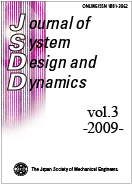3 巻, 2 号
選択された号の論文の8件中1~8を表示しています
- |<
- <
- 1
- >
- >|
Papers
-
2009 年 3 巻 2 号 p. 162-172
発行日: 2009年
公開日: 2009/04/30
PDF形式でダウンロード (528K) -
2009 年 3 巻 2 号 p. 173-187
発行日: 2009年
公開日: 2009/04/30
PDF形式でダウンロード (454K) -
2009 年 3 巻 2 号 p. 188-202
発行日: 2009年
公開日: 2009/04/30
PDF形式でダウンロード (424K) -
2009 年 3 巻 2 号 p. 203-214
発行日: 2009年
公開日: 2009/04/30
PDF形式でダウンロード (3964K) -
2009 年 3 巻 2 号 p. 215-226
発行日: 2009年
公開日: 2009/04/30
PDF形式でダウンロード (523K) -
2009 年 3 巻 2 号 p. 227-236
発行日: 2009年
公開日: 2009/04/30
PDF形式でダウンロード (416K) -
2009 年 3 巻 2 号 p. 237-249
発行日: 2009年
公開日: 2009/04/30
PDF形式でダウンロード (1121K) -
2009 年 3 巻 2 号 p. 250-257
発行日: 2009年
公開日: 2009/04/30
PDF形式でダウンロード (438K)
- |<
- <
- 1
- >
- >|
